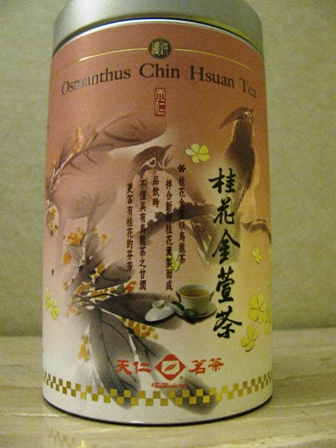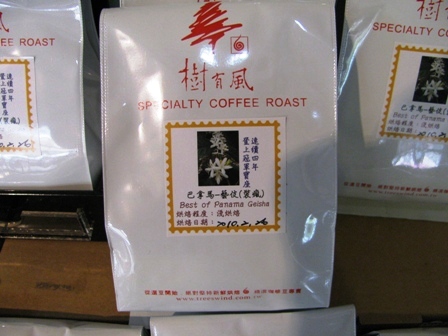- NYT reports on the US Justice Dept’s probe of seed prices. CAS-IP submitted evidence.
- University of Guam funded to study noni (Morinda citrifolia)
- Mostly-foliage-fed vs mostly-seed-fed: the debate continues.
- Edible Blue Honeysuckle berry news. Who knew? (Link removed as spam.)
- The Scientist Gardener tackles grapes. Cheers.
The Green Evolution that preceded the Green Revolution
![]() The standard litany against the Green Revolution is that it failed to banish hunger because the technologies it ushered in were no use to small peasant farmers. Farmers with access to cash and good land did well, but poorer farmers on marginal land got nothing out of the revolution, and if they did somehow buy into it (subsidies, handouts) they were worse off afterwards. That’s not to deny that the Green Revolution increased yields, especially of wheat and rice. Just to say that it did nothing for most smallholders.
The standard litany against the Green Revolution is that it failed to banish hunger because the technologies it ushered in were no use to small peasant farmers. Farmers with access to cash and good land did well, but poorer farmers on marginal land got nothing out of the revolution, and if they did somehow buy into it (subsidies, handouts) they were worse off afterwards. That’s not to deny that the Green Revolution increased yields, especially of wheat and rice. Just to say that it did nothing for most smallholders.
A wonderful paper by Jonathan Harwood, in Agricultural History, demonstrates that this wasn’t always so. 1 In the early days of the Rockefeller Foundation’s Mexican Agricultural Program, starting in the 1940s, the target was “resource-poor farmers who could not afford to purchase new seed annually”. The MAP’s advisors put improving cultivation practices at the top of their list, with better varieties second. And the improved varieties were to come from “introduction, selection or breeding”.
Accordingly, the MAP initially devoted considerable effort to testing existing Mexican varieties of maize to identify the best one for each locality. Simply by redistributing these to the most suitable locality, one advisor recommended, the quality of maize cultivation could be improved quickly without having to wait years for the development of new varieties. This approach was richly rewarded when it was discovered that yield in some regions could be increased by 20 to 30 percent by introducing a variety native to another region.
The MAP was pragmatic and focussed on farmer needs in other ways too. Breeding was based on synthetic varieties rather than F1 hybrids, which could take a decade or more to deliver. The first of these improved varieties yielded about 30% more than the benchmark variety.
So what changed? Harwood identifies an overall shift in the relationship between the MAP and its host government in Mexico, in particular over the role of extension. At first, the Rockefeller Foundation’s advisors were convinced that extension was the most important activity for them. As Harwood writes:
This initial emphasis upon extension is significant because it reflected the advisors’ concern to reach small farmers. Large farmers, in Mexico as elsewhere, were much better placed to look after themselves. Unlike their smaller brethren, they could afford to take risks with new methods and had the capital to invest in them; many were thus keen to cooperate with the MAP by offering land for field trials and adopting new varieties. But to disseminate the requisite knowledge to small farmers required a functional extension service, which Mexico did not yet have. The existing service … was totally unsatisfactory. Since its staff had no means of transportation, they never came into direct contact with farmers and were thus reduced to distributing leaflets and answering letters. Given low levels of literacy among peasants, this was not a viable way of reaching the vast majority of farmers. Nor was the MAP ever likely to have either the resources or the manpower to take on such a huge job itself.
The Mexican Government, despite advice to improve extension, preferred to support large landowners rather than peasant farmers. And it was, of course, the large landowners (and business in general), who supported the Mexican government. The strange part is that while the MAP publicly said its goal was to alleviate poverty, in private its officers had additional motivations. Harwood quotes a 1951 Rockefeller Foundation note:
Communism makes attractive promises to underfed peoples; democracy must not only promise as much, but must deliver more. … [U]nderprivileged people attribute their present plight to the domination of the capitalist colonial system. … In this struggle for the minds of men the side that best helps satisfy man’s primary needs for food, clothing and shelter is likely to win. … Appropriate action now may help [people of developing nations] to attain by evolution the improvements, including those in agriculture, which otherwise may have to come by revolution.
And so the plant breeders formented their own revolution, instead of continuing to help peasant farmers evolve. MAP staff began to concentrate on problems they could solve, rather than problems that needed solving. The Mexican government wanted exports, to fund industrialization. MAP scientists turned their attention to wheat, and in just ten years Mexico’s output of wheat had trebled and by 1958 the country was indeed exporting wheat.
Are there lessons here for today? Extension continues to be neglected by countries and donors alike, and many breeders do their best to improve yields while remaining outside the economic and political arenas where the battles to end hunger must be fought. Complex problems require complex solutions. It would be nice to think that rather than new Green Revolutions, today’s moving spirits might eventually return to their roots and seek Green Evolutions again.
Nibbles: Corn, Saffron, Pacific, Carrots, Food, Quarantine, Medicinal plants
- “Can corn be taught to fix its own nitrogen?” Probably not.
- Many saffron clones identical shock.
- New Agriculturist on agrobiodiversity conservation and use in the Pacific in general and Pohnpei in particular. Go Local!
- An idiosyncratic take on carrot diversity and history.
- The Indigenous Food Systems Network has a new website. h/t PAR
- Landscape of Quarantine, an exhibition that addresses, among other things, the spread of pests and diseases.
- Semillas Sagradas — Sacred Seeds.
Taiwanese agrobiodiversity juxtapositions
Seen in one small convenience store by the roadside in Shanhua: rice and peanut milk, soy and mung bean drink, and almond and fish snack. All mainstream products in fancy packaging. Maybe it’s just that these are unfamiliar combinations, but it seems to me that we’re not nearly as good in the West at mixing and matching our agricultural biodiversity. By the way, there was asparagus juice too. I tried them all, and they were all pretty good.
A coffee journey
Sometimes you come across a story that illustrates so many of the themes of agrobiodiversity conservation that it’s almost too good to be true. I have it on very good authority that the one I’m about to tell you is indeed true, though. The authority is the former head of the genebank at the Centro Agronómico Tropical de Investigación y Enseñanza in Costa Rica (CATIE), who is now the head of the genebank at The World Vegetable Centre (AVRDC) in Taiwan.
He told me the story over coffee at the Trees Wind cafe in Tainan City, a short ride from AVRDC’s headquerters. The story is about the coffee he was drinking. I was drinking a very superior arabica from the highlands of Taiwan. But that’s another story, or at least a different aspect of the story. The coffee my host was drinking is called Geisha and it comes from Hacienda Esmeralda in Panama.
He discovered it by chance at Trees Wind when he first moved to AVRDC a year and a half ago and was exploring the surroundings. The name jumped out at him from the menu because he knew it from his days managing the CATIE coffee collection. The owner of Esmeralda had visited the CATIE genebank some years back, looking for coffee germplasm to try out. He’d been growing coffee for decades, having originally got his material from CATIE, but he was now expanding into a higher altitude plantation and wanted new varieties to try. He settled on an accession called Geisha. Nothing to do with Japan, though: this is an Ethiopian landrace, very low yielding, but very high quality; and from the right sort of altitude.
My host didn’t hear much after that about how the material he sent out to Panama fared. Not until, that is, he sampled a cup of the stuff in Tainan some years later. And an expensive cup it is too: 225g of beans will set you back TWD 1800 (USD 56). Coffee is now also grown in Taiwan, along with tea. The stuff I had was great, and about a third of the price of Geisha from Panama, though on a par with interesting brands from Ecuador, Ethiopia and Indonesia.
So, material collected in Ethiopia probably back in the 70s by an international FAO mission, conserved at a regional research institute in Costa Rica, grown in Panama, marketed around the world, and finally sipped in Taiwan by people whose stimulant of choice was quite different until fairly recently, in competition with material from a dozen other countries on three continents. Quite a journey. Quite a lesson in agrobiodiversity interdependence, conservation and use.

